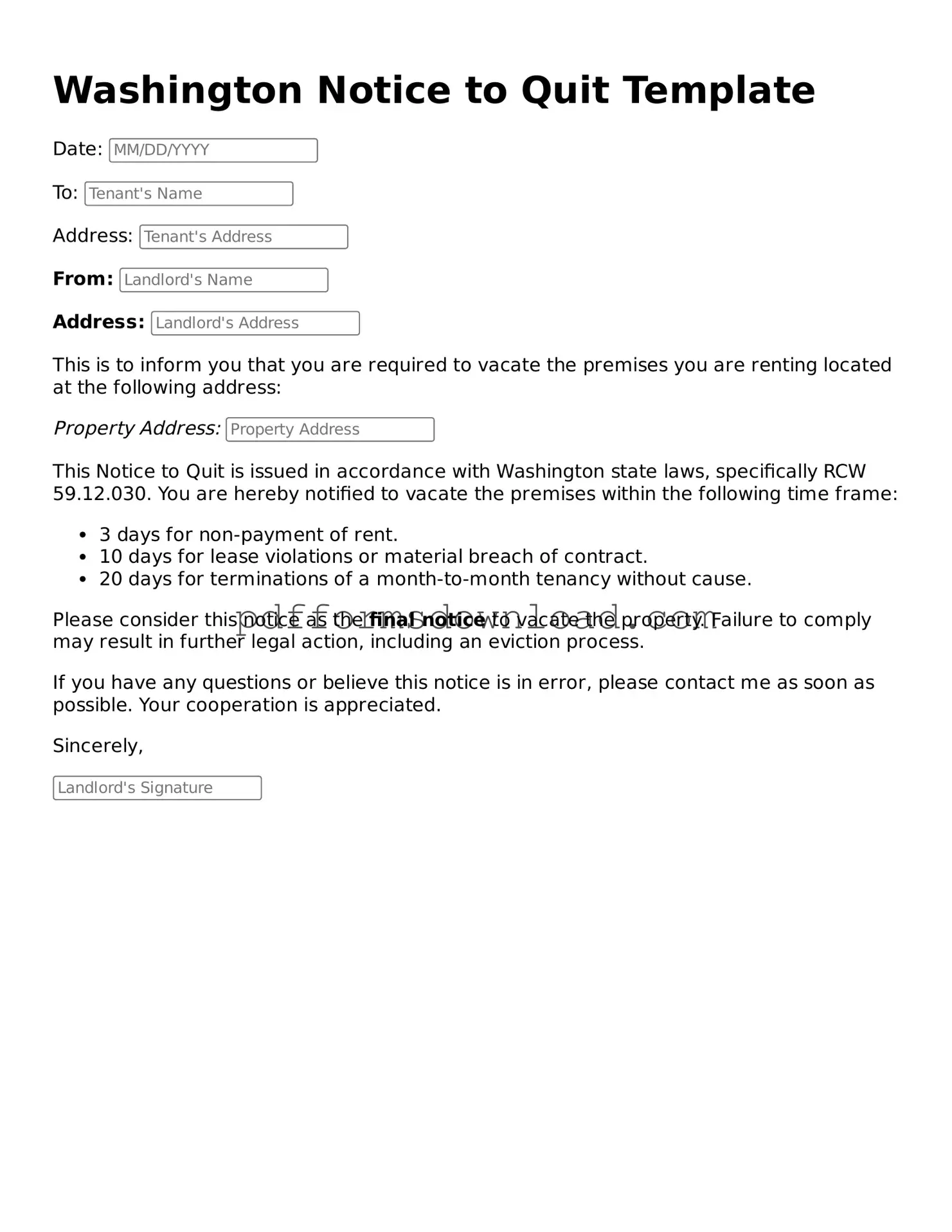What is a Washington Notice to Quit form?
The Washington Notice to Quit form is a legal document used by landlords to formally notify tenants that they must vacate the rental property. This notice is typically issued when a tenant has violated the terms of their lease agreement or has failed to pay rent. The form outlines the reasons for the eviction and provides a specific timeframe within which the tenant must leave the premises. It is an essential step in the eviction process, ensuring that both parties are aware of their rights and obligations.
How much notice must be given in a Washington Notice to Quit?
In Washington, the amount of notice required can vary depending on the reason for the eviction. For non-payment of rent, landlords must provide a 14-day notice to quit. If the eviction is due to a lease violation, a 10-day notice is generally sufficient. It’s crucial to deliver the notice correctly, as improper notice can delay the eviction process and may require the landlord to start over. Always ensure that the notice is clear and includes all necessary details to avoid complications.
What should be included in a Washington Notice to Quit?
A Washington Notice to Quit should include several key components. First, it must identify the landlord and tenant by name and address. Next, the notice should specify the property address being vacated. It is also important to clearly state the reason for the eviction, whether it’s non-payment of rent or a lease violation. Lastly, the notice should indicate the time frame within which the tenant must vacate the property. Providing this information helps ensure that the notice is legally valid and enforceable.
What happens if the tenant does not comply with the Notice to Quit?
If a tenant does not comply with the Washington Notice to Quit, the landlord has the right to initiate eviction proceedings in court. This process typically involves filing a complaint and obtaining a court order for eviction. It’s important to follow legal procedures carefully, as any missteps can lead to delays or dismissal of the case. Tenants may also have the opportunity to contest the eviction in court, so landlords should be prepared to present their case effectively.
